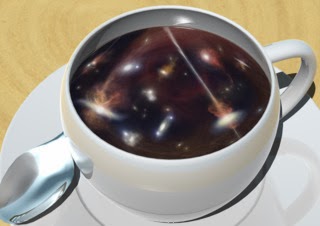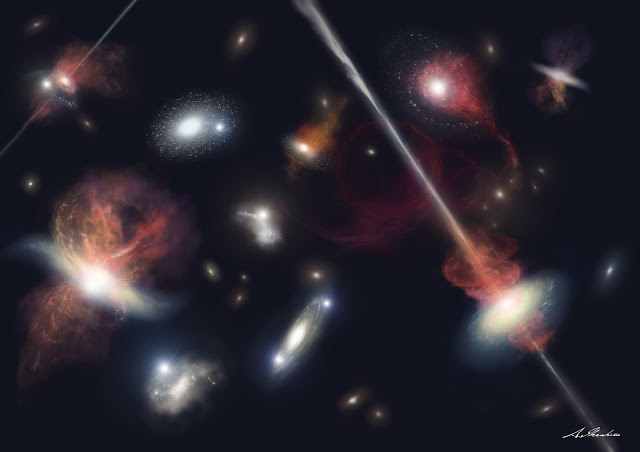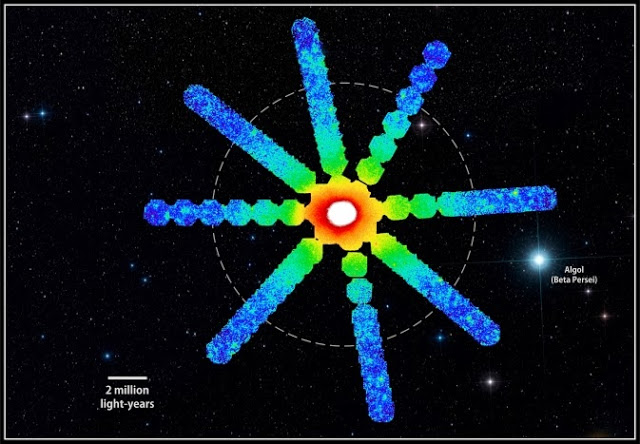

| Visitors Now: | |
| Total Visits: | |
| Total Stories: |

| Story Views | |
| Now: | |
| Last Hour: | |
| Last 24 Hours: | |
| Total: | |
40 Billion Exploding Stars And Life On Earth
Between 2009 and 2011, researchers from the Kavli Institute for Particle Astrophysics and Cosmology (KIPAC), jointly run by Stanford University and the Department of Energy’s SLAC National Accelerator Laboratory in California, used Suzaku’s unique capabilities to map the distribution of iron throughout the Perseus Galaxy Cluster.
What they found is remarkable: Across the cluster, which spans more than 11 million light-years of space, the concentration of X-ray-emitting iron is essentially uniform in all directions.
“This tells us that the iron — and by extension other heavy elements — already was widely dispersed throughout the universe when the cluster began to form,” said KIPAC astrophysicist Norbert Werner, the study’s lead researcher. “We conclude that any explanation of how this happened demands lead roles for supernova explosions and active black holes.”
The universe underwent a turbulent youth 10 to 12 billion years ago, as shown in this illustration. Stars formed at very high rates, but many of these newborn stars died quickly in supernova explosions that produced the chemical elements beyond helium – the building blocks of later stars, planets and life. In the same period, supermassive black holes in the centers of galaxies devoured large amounts of the gas around them, producing strong jets and outflows. The combined energy from numerous supernova explosions and black hole jets created powerful “winds” that blew these elements out of the galaxies, into intergalactic space.
Making the iron is one thing, while distributing it evenly throughout the region where the cluster formed is quite another. The researchers suggest that everything came together during one specific period of cosmic history.
Between about 10 and 12 billion years ago, the universe was forming stars as fast as it ever has. Abundant supernovae accompany periods of intense star formation, and the rapid-fire explosions drove galaxy-scale outflows. At the same time, supermassive black holes at the centers of galaxies were at their most active, rapidly accreting gas and releasing large amounts of energy, some of which drove powerful jets. Together, these galactic “winds” blew the chemical products of supernovae out of their host galaxies and into the wider cosmos.
Sometime later, in the regions of space with the largest matter densities, galaxy clusters formed, scooping up and mixing together the cosmic debris from regions millions of light-years across.
“If our scenario is correct, then essentially all galaxy clusters with masses similar to the Perseus Cluster should show similar iron concentrations and smooth distributions far from the center,” said co-author Ondrej Urban, also at KIPAC.
New gas entering the cluster falls toward its center, eventually moving fast enough to generate shock waves that heat the infalling gas. In the Perseus Cluster, gas temperatures reach as high as 180 million degrees Fahrenheit (100 million C), so hot that the atoms are almost completely stripped of their electrons and emit X-rays.
Young stars, exploding supernovae, and voraciously feeding black holes produced powerful winds 10 to 12 billion years ago. The spoon in this illustration represents the outflows that lifted heavy elements from young galaxies and mixed it with the intergalactic gas.

Credit: Akihiro Ikeshita
The Perseus Galaxy Cluster, which is located about 250 million light-years away and named for its host constellation, is the brightest extended X-ray source beyond our own galaxy, and the brightest and closest cluster for which Suzaku has attempted to map outlying gas.
The team used Suzaku’s X-ray telescopes to make 84 observations of the Perseus Cluster, resulting in radial maps along eight different directions. Thanks to the sensitivity of the spacecraft’s instruments, the researchers could measure the iron distribution of faint gas in the cluster’s outermost reaches, where new gas continues to fall into it.
The findings will be published in the Oct. 31 issue of the journal Nature.
Suzaku (Japanese for “red bird of the south”) was launched as Astro-E2 on July 10, 2005, and renamed in orbit. The observatory was developed by the Japan Aerospace Exploration Agency’s Institute of Space and Astronautical Science in collaboration with NASA and other Japanese and U.S. institutions. NASA Goddard supplied Suzaku’s X-ray telescopes and data-processing software and continues to operate a facility that supports U.S. astronomers who use the spacecraft.
Francis Reddy
NASA’s Goddard Space Flight Center, Greenbelt, Md.




